Tom McHale writes [via ammoland.com]
About three years ago, I had the pleasure of visiting the fledgling SIG SAUER Ammunition factory. It was in the middle of a cornfield in the Kentucky boondocks, I’m not exaggerating. As the business took off, it didn’t take long to figure out that SIG needed a larger factory. I recently visited the brand-spanking-new SIG SAUER ammunition facility just outside of Little Rock, Arkansas.
SIG SAUER Ammunition is serious about product performance. To ensure that new ammunition designs perform as expected, to verify that individual ammo lots are up to spec, the company operates a dedicated testing facility inside the main factory. As I recall, the SIG folks go through more ballistic gelatin than anyone in the industry, even more than companies with much larger production.
SIG’s developed a custom setup to make ballistic gelatin blocks literally by the thousands. The system monitors ambient and water temperature, measures precise amounts of powdered gelatin, and cranks out from one to 12 blocks per batch. A little cinnamon oil prevents spoilage from the animal-based gel. Even so, blocks are always either used or thrown away within seven days.
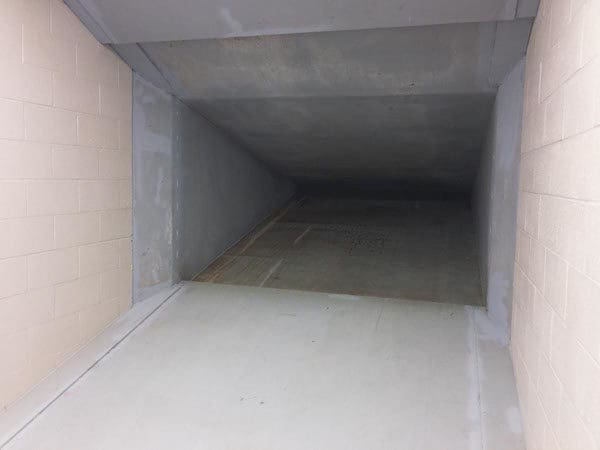
The company houses several indoor ranges for ammo testing. In the picture above notice that the bullet trap looks darker toward the back. Water system keeps it wet to prevent dangerous dust and residue from becoming airborne. Sophisticated chronographs verify that velocity is up to spec. Technicians test ballistic gelatin in a variety of scenarios, including bare gelatin, light fabric barrier, heavy fabric, wood, steel, and automotive glass.
The factory has a room dedicated to inserting primers into brass cartridge cases. The rotary machines feed empty brass cases into a priming mechanism where primers are inserted. It’s stunningly fast. Watching how many dump out of the chute each and every minute is mesmerizing. As a reloader, consider me infinitely jealous.
The SIG team uses a tray loading system for brass ammo cases. Rather than sending cartridge cases down a production line individually, the system loads 210 cases into a tray. Cartridges go through the steps in bulk. This is how the company loads handgun and short rifle (like 300 Blackout) cartridges.
In the photo above you can see a tray being loaded with empty brass cases. The machine shakes the trays; the brass cases fall into holes heavy (base) side down. From this point on, each tray of brass goes all the way through the system until the final packaging stage.
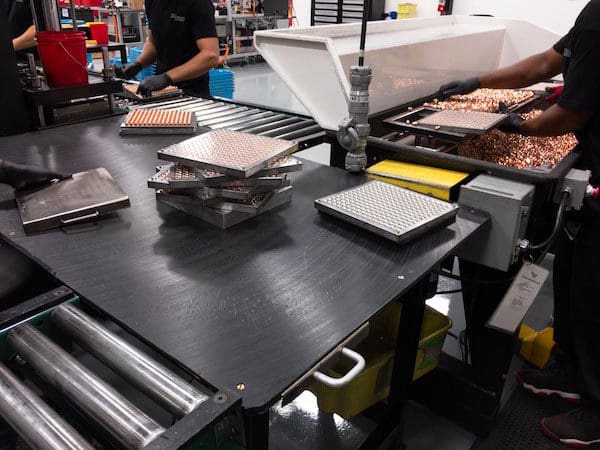
At the beginning of the reloading line, other trays are loaded with projectiles. In the seating stage, the two trays are mated temporarily to line the bullets up with the powder-charged cases.
After a tray of cases is filled with powder — again all 210 at once — it heads to the seating and crimping machines. Two setups like the one above precisely seat and crimp all cases in a tray at once.
At each step of the process, custom-designed checking systems verify things like primer presence, primer orientation, powder charge, case height, overall cartridge height, and more. The verification systems have built-in redundancy; any given cartridge will have similar attributes checked multiple times throughout the process.
The part of the process that really got my attention: the packaging setup. Guides, pulleys, belts, and vacuum machines guide trays of cartridges into boxes, orient them, seal them, and print labels. It’s mesmerizing, running for thousand and thousands of boxes of ammo per day.
One of the reasons that SIG SAUER moved into a giant new factory: to add a brass-making production line. As volumes increase, the company needs to be in control of its own brass case supply. The new brass production line is making the rifle cases for now. On the day I was there, the line was cranking out tens of thousands of SIG SAUER 6.5mm Creedmoor cases ahead of the new-for-SIG caliber’s launch.
Sometimes the old ways are the best. SIG scoured the country in search of No. 304 machines. To bring them up to date, they added custom computerized control systems. The machines are arranged in a line; each machine does a little more work to each case, ultimately turning it into a completed cartridge case.
SIG washes and tumbles the brass at each step in the process. Every case is cleaned a half-dozen or so times along the way. It’s not required, but the SIG says that the extra cleaning yields a more consistent end product.
A custom brass annealing machine sits towards the end of the brass line. This setup heats each piece of brass around the shoulder to make it slightly less brittle, slightly more flexible. It allows the seating process to work smoothly while maintaining the correct amount of case neck tension on the bullet.
Many of the SIG SAUER ammunition factory rifle cartridges are loaded in a more traditional rotary press system like the one above. There’s a lot changing on a daily basis, so we may see something different in the not-so-distant future.
When you do as much testing as the SIG SAUER ammunition factory, you need a boatload of different guns. The arsenal room is chock full of rifles, revolvers and pistols. Most of the guns here are made by different companies because SIG’s ammo has to work properly with all firearms.
SIG SAUER’s come a long way since it began producing its own ammo. Literally. With their new Arkansas factory, they’re ready, willing and able to challenge the established players in the U.S. ammunition industry.
Tom McHale is the author of the Insanely Practical Guides book series that guides new and experienced shooters alike in a fun, approachable, and practical way. His books are available in print and eBook format on Amazon. You can also find him on Facebook, Twitter, and Pinterest.

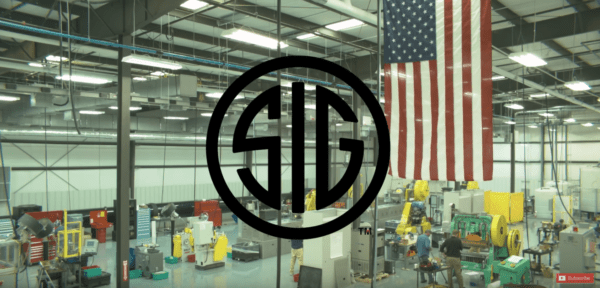
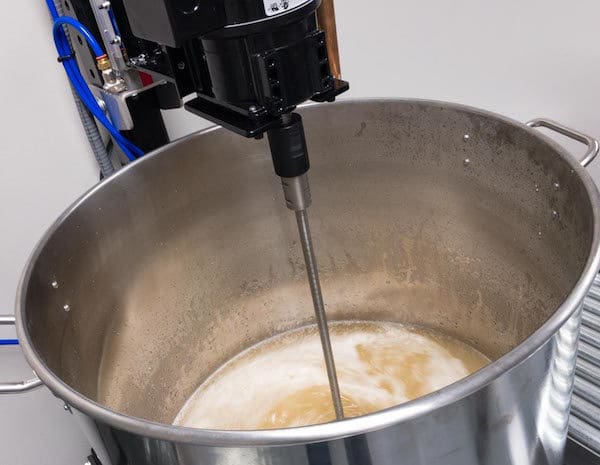
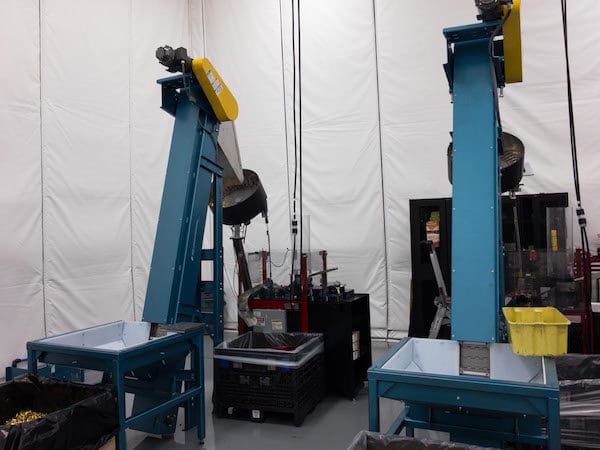
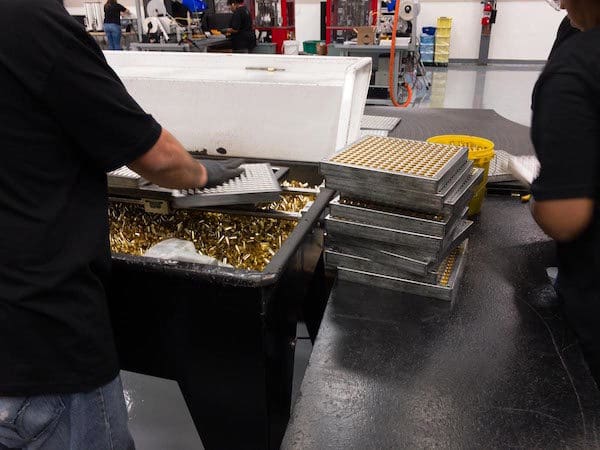
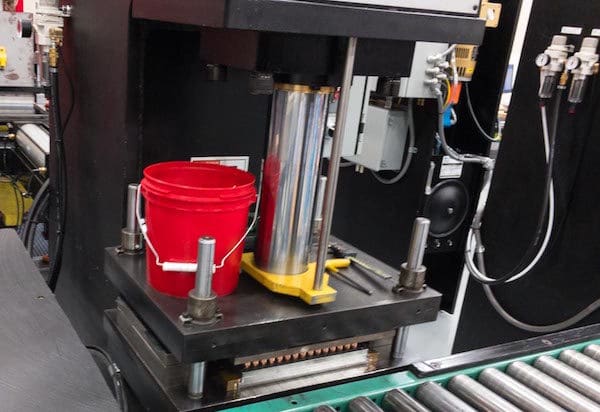
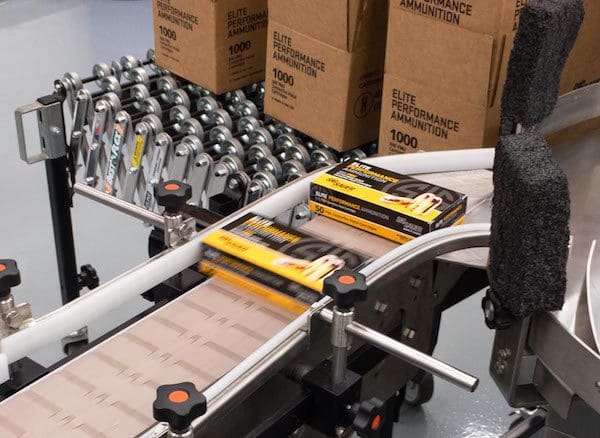
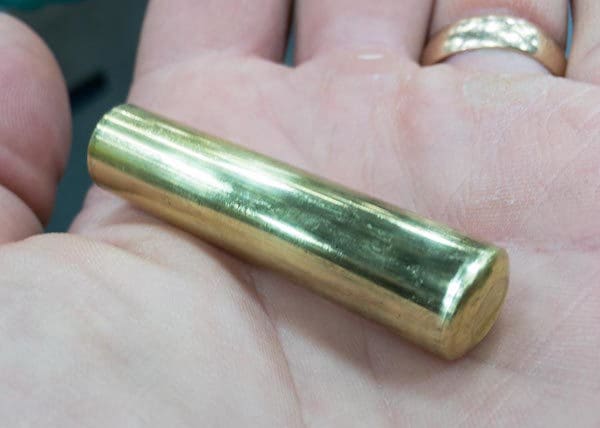


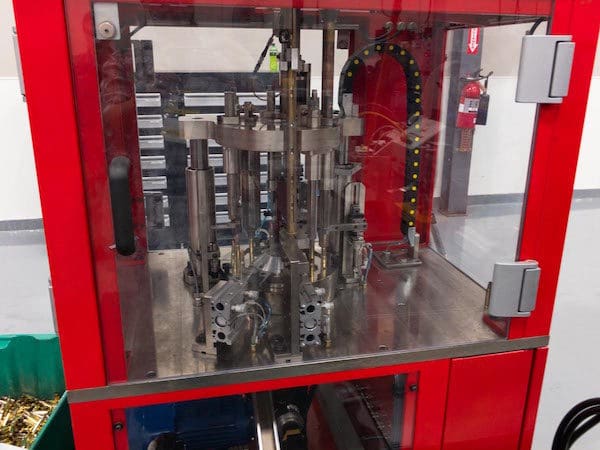
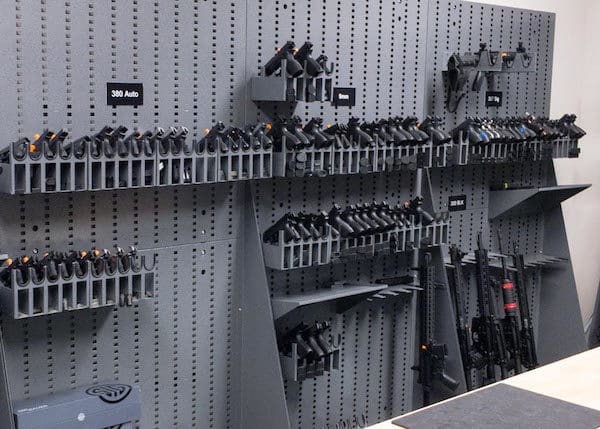



A whole lot of words about how mesmerizing the manufacturing machinery is. Not many (any) on quality or quality control. Impress and mesmerize me with the actual results of the product performance testing from the fancy ballistic gel with cinnamon oil. Mesmerize me with how accurate the powder measurements are and how they check for quality. Not how dark the bullet trap is.
Usually the rule is that if the facts are not on your side baffle them with bs…. this sounds alot like bs.
How ’bout quit being a cheap, rude prick and go shoot some? It’s good ammo at a competitive price.
From the pictures, he wasn’t shown much of the secret sauce. That plate of ammo seating / crimping press is . . . shocking. I would think it would mess up more ammo than make it.
That one caught my attention too. I’m thinking it could let you do really fine-grained lot identification and process tracking if the need arose.
It just doesn’t seem ~ precise [?] enough (no ability to build-in enough precision?) The platen press doesn’t (appear to) have any differentiation measurement or correction capability built-in. One case’s neck tension / projectile seating tension would screw-up the seating of all of the other surrounding rounds [?].
When I first read / saw that I thought they were Fing with their competition, like ‘dummy-up’ this crazy fake process and see your competition trip all over itself trying to duplicate it. Nothing says “precision” like a nice red bucket. Ohhh boy, gotta have that red bucket on one side of the seating platen-press or the whole thing’ll go kattywompus.
It’s good that they’re making their own brass, and it’s also bad. Good that there is competition for Lake City / Federal Cartridge. Bad that there’s competition for brass resources.
Joe: I take your point.
I suppose we have case length, projectile length, and OAL cartridge length, with the seat depth being (OAL – case – projectile length). All of the dimensions matter, but given sufficiently rigid plates and measurements at the corners, their method would allow for setting very uniform cartridge OAL. If you do a good job controlling the tolerances on case and projectile length you’ll automatically also get pretty good tolerance on seat depth.
Re the crimping, yeah I have no idea how this would do that properly. 🙂 But it’s fun to think about …
Re brass, yes there’s competition for supply but that said, I’d rather see them make their own cases as it pulls the supply from further up the chain.
Ok, but the press has to have little seating dies on it that crimp. Still, would think you might get ~ some bad results with compression loads (of which they might not do any) and if you didn’t have good chamfers / neck flaring. Bullet jacketing would have to be very consistent too.
“At each step of the process, custom-designed checking systems verify things like primer presence, primer orientation, powder charge, case height, overall cartridge height, and more. The verification systems have built-in redundancy; any given cartridge will have similar attributes checked multiple times throughout the process.”
Yep, absolutely nothing about quality control in this article… (Eyeroll)
Holy cow, you mean that they actually check for the “presence” of a primer and its orientation? That is comforting because the last time I got a box of ammo with missing primers was… oh wait, never.
Checking for case height and overall length is not very impressive either, since this is just checking the ammo is to spec.
There is a relative glut of good ammo on the market. My rifle shoots excellent with cheap wolf ammo. I mean, positively outstanding at 0.22c/round. If you want to impress people and sell ammo, they need to up their marketing game.
And if you want people to take you seriously, it helps to not make it clear you’re complaining without having bothered to read the article, then continuing to bloviate when called on it.
Oh, and now you want marketing rather than are complaining about it?
Ice creamery, candy factory, brewery, bakery… tour any of these and you get what?
FREE SAMPLES!!!
So, what did ya get? 🤠
If they gave out free samples, they’d probably have to do tour reservations five years in advance and only half their product would make it to the shelves.
I have not seen any gel test that Sig handgun ammo expanded or expanded properly,and I’ve watched and downloaded over 200 gel test videos.
What is so special about No. 304 machines? Also what do they do that newer machines cannot or no longer do?
If Sig Sauer’s online media rep is here, whom do I contact about a job? I’ve been watching job sites and gone to Sig Sauer’s website several times, but have found no job listings.
Arkansas, seems to really be getting into ammo and firearms. I like that, the mores the better I say. I’d like them to do some obsolete type cartridges since they can roll their own cases. Nagants, Jap shit pistols, stuff that’s hard to find……… Does anyone like privi partizan ammo? I got some 7. 62x 25 hp’s that didn’t impress me that much, velocity was closer to the Mauser round
Comments are closed.